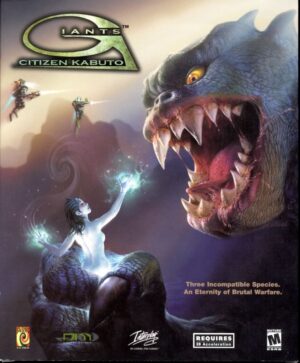Retro Replay Review
Gameplay
Atelier Iris: Eternal Mana embraces a classic turn-based battle system that will feel immediately familiar to long-time JRPG fans. Random encounters dot the landscape, ensuring that exploration is punctuated by strategic skirmishes. Combat unfolds on a grid-like field, where positioning and the careful management of mana creatures—known as “Elemental Spirits”—play a central role. Each spirit can be equipped to characters, granting access to unique abilities and elemental affinities that add a layer of tactical depth.
(HEY YOU!! We hope you enjoy! We try not to run ads. So basically, this is a very expensive hobby running this site. Please consider joining us for updates, forums, and more. Network w/ us to make some cash or friends while retro gaming, and you can win some free retro games for posting. Okay, carry on 👍)
The alchemy mechanics are the heartbeat of the gameplay loop. Players gather raw materials from monsters and the environment, then combine them in recipes to create weapons, armor, healing items, and even powerful catalysts. This crafting system encourages experimentation: discovering rare or hidden ingredients yields equipment with boosted stats or special effects. Equipping different mana to crafted items further customizes character growth, allowing for niche builds or well-rounded party setups.
Aside from combat, Atelier Iris introduces light puzzle-solving within its dungeon design. Certain barriers or hidden passages can only be overcome by equipping the correct spirit, whose physical abilities—like burrowing underground or summoning wind currents—unlock new areas. This intertwining of exploration and alchemy-based powers keeps dungeon runs fresh and rewards players who thoroughly experiment with their mana roster.
Character progression is equally tied to mana management. When characters level up, they receive bonuses influenced by the spirits they carry. Some shy or mischievous spirits require gifts—found or crafted—to bind them to your party, creating a collectible aspect that urges thorough exploration. The balance between battle, synthesis, and spirit-hunting strikes a satisfying rhythm that will engage completionists and casual players alike.
Graphics
Visually, Atelier Iris: Eternal Mana delivers a vibrant palette that brings the fantasy realm of Regallzine to life. Environments range from lush forests and crystalline caverns to bustling towns filled with NPCs going about their daily routines. Although the game was released on PlayStation 2 hardware, its pre-rendered backgrounds blend seamlessly with lively character models, creating a warm, storybook-like presentation.
Character designs are distinctive—each party member and spirit exhibit a unique silhouette and color scheme, ensuring they stand out during battles and cutscenes. Animations, while not hyper-detailed, are smooth and expressive; spellcasting sequences and item-synthesis scenes in particular boast eye-catching visual flourishes. Mana creatures shimmer with ethereal effects, underscoring their magical nature and reinforcing the importance of alchemy in every encounter.
Dungeon interiors reuse certain tilesets, which can lead to a sense of repetition during extended exploration. However, subtle palette swaps and ambient lighting changes help differentiate one cavern from the next. Occasional video sequences—when unveiling major plot developments—feel richly animated, offering a brief but welcome contrast to the in-engine graphics.
Story
Set in the land of Regallzine, Atelier Iris weaves a tale of ambition, faith, and moral responsibility. The alchemist guild serves as the story’s backbone, showcasing a world where humankind’s mastery of mana has led to both wondrous inventions and dangerous hubris. When a rogue alchemist’s plan to resurrect an ancient god threatens to upset this balance, a young prodigy named Klein steps forward to confront what he perceives as an existential threat.
Klein’s journey is as much personal as it is global. Along the way, he befriends a colorful ensemble—a stern swordswoman, a gentle healer, and mischievous spirits eager to prove their loyalty. Their banter lightens moments of tension, but darker themes emerge as the true motives behind the resurrection plot are slowly revealed. Betrayal, sacrifice, and the ethics of wielding god-like power underpin the narrative’s emotional core.
The pacing alternates between relaxed town-building segments—where players can gather rumors, take sidequests, and refine alchemical techniques—and high-stakes confrontations in shadowy ruins. Key story chapters are bookended by full-motion cutscenes, elevating dramatic reveals and reinforcing character relationships. Though the plot follows familiar JRPG tropes, the central theme of alchemy versus divine resurrection gives the story a refreshing philosophical angle.
Overall Experience
Atelier Iris: Eternal Mana offers a charming blend of alchemy-driven progression, collectible mana spirits, and strategic turn-based combat. Its world is brimming with quaint villages, mystical dungeons, and a lively cast whose interactions keep the journey engaging from start to finish. The satisfaction of crafting a powerful item or finally recruiting a rare spirit fosters a genuine sense of accomplishment.
Despite some repetition in dungeon design and the occasional slowdown in pacing, the game’s strengths—robust synthesis mechanics, a thoughtful story, and colorful presentation—shine through. Fans of classic JRPGs and those intrigued by a deep crafting system will find Atelier Iris a worthy addition to their library. Its moderate difficulty curve and optional timers on certain quests provide flexibility for casual players, while completionists will appreciate the myriad side objectives.
Ultimately, Atelier Iris: Eternal Mana stands as a testament to the enduring appeal of character-driven alchemy adventures. It may not revolutionize the genre, but its polished systems and endearing narrative deliver a memorable role-playing experience that continues to resonate with aficionados of magic, exploration, and heartfelt storytelling.
 Retro Replay Retro Replay gaming reviews, news, emulation, geek stuff and more!
Retro Replay Retro Replay gaming reviews, news, emulation, geek stuff and more!




Reviews
There are no reviews yet.